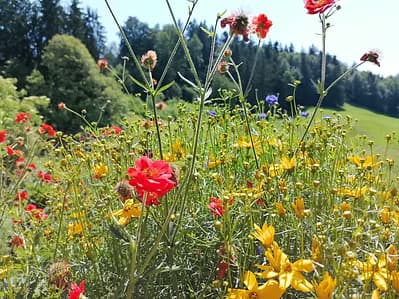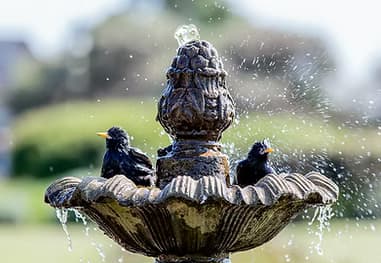
Rewilding for Climate Change – How We Can All Play Our Part
Jennifer Robson
Digital Content & PR Director for Climate Action North, a community interest company dedicated to taking action to tackle the climate crisis and leading the Rewilding Network in the North of England. You can check out their work at: http://www.climateactionnortheast.org.uk.
For too long, nature has been treated as something to conquer rather than something to coexist with. The consequences are stark: over half of UK species are in decline, 15% are threatened with extinction, and all top predators have been hunted to extinction, according to Rewilding Britain.
But nature doesn’t need us to control it—it needs us to give it space. That’s where rewilding comes in.
What Is Rewilding?
Rewilding is a powerful form of ecological restoration. It focuses on reconnecting with nature, reintroducing lost species, and encouraging natural processes to return, all in an effort to build biodiversity, support resilient ecosystems, and help tackle climate change.
At its core, rewilding aims to rebalance the relationship between people and the planet—so that both can thrive, side by side.
You Don’t Need a Nature Reserve to Rewild
Rewilding isn’t just for large-scale conservation projects. You can support it from your garden, balcony, community green space, or even a window box. No space is too small to make a difference.
Here’s how you can get started:
1. Rethink What a Garden Should Look Like
A perfectly manicured lawn might look tidy, but it’s often a desert for wildlife. Try letting grass grow longer or leaving a small patch uncut. This provides shelter and food for insects, birds, and small mammals.
Embrace so-called “weeds.” Plants like dandelions and thistles are rich in nectar and pollen, vital for bees and butterflies. And those piles of leaves? They make perfect hiding and hibernation spots for hedgehogs, frogs, and insects.
2. Plant for Pollinators
Fill your outdoor space with native British wildflowers such as:
- Red Campion
- Moth Mullein
- Primrose
- Oxeye Daisy
- Basil
- Dandelion
These are magnets for bees, butterflies, moths, hoverflies, and birds. Planting trees, hedges, and shrubs also creates essential shelter and nesting spots for local wildlife.
3. Add a Water Source
Water brings life. Whether it's a pond, bird bath, or even a shallow dish, adding water invites frogs, birds, insects, and mammals into your garden. Even the smallest sources can have a big impact.
4. Build Safe Havens
Create safe places for wildlife to rest and nest. Try:
- Bird nesting boxes
- Bat boxes
- Hedgehog homes
- Bug hotels
- Bee houses
These additions are simple, inexpensive, and effective.

5. Go Chemical-Free
Skip the pesticides, herbicides, and chemical fertilizers. These products can harm beneficial insects and pollute your soil and water. Look for natural alternatives that are safe for pets, wildlife, and people.
6. Team Up with Neighbours
Rewilding doesn’t have to be a solo effort. Chat with your neighbours about wildlife corridors, shared habitats, or creating connected gardens. Opening up boundaries—like cutting holes in fences for hedgehogs—can expand your impact and help threatened species move safely between green spaces.
7. Pause, Watch, Enjoy
Don’t forget to enjoy the benefits of your rewilded space. Add a bench, chair, or quiet corner where you can sit back, listen to birdsong, watch pollinators at work, and reconnect with the nature you’ve helped nurture.
Rewilding isn’t about perfection—it’s about participation. Whether it’s a full garden makeover or a single flower pot on a balcony, every action counts. Together, we can help reverse biodiversity loss and fight climate change, one patch of earth at a time.